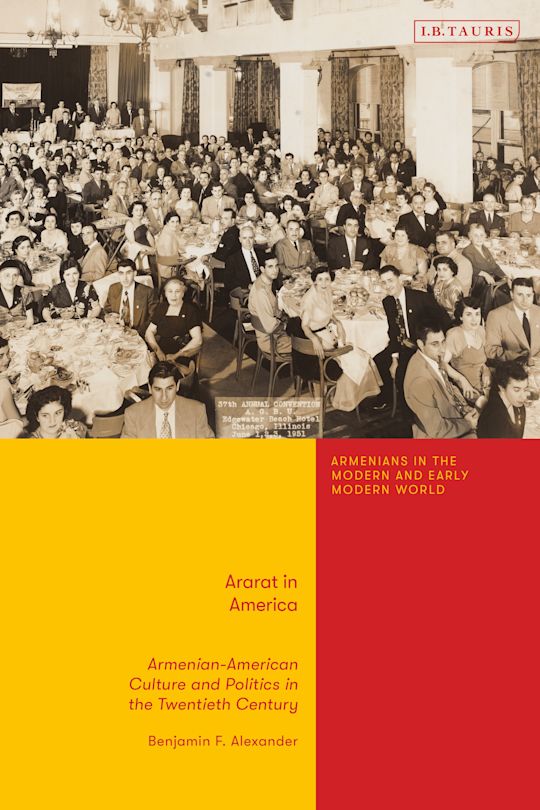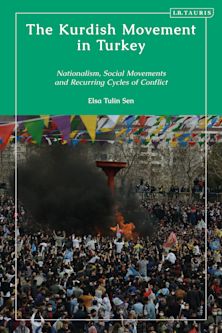- Home
- ACADEMIC
- Middle East
- Migration and Minority Studies
- Ararat in America
Ararat in America
Armenian American Culture and Politics in the Twentieth Century
Ararat in America
Armenian American Culture and Politics in the Twentieth Century
You must sign in to add this item to your wishlist. Please sign in or create an account
Description
How has the distinctive Armenian-American community expressed its identity as an ethnic minority while 'assimilating' to life in the United States? This book examines the role of community leaders and influencers, including clergy, youth organizers, and partisan newspaper editors, in fostering not only a sense of Armenian identity but specific ethnic-partisan leanings within the group's population. Against the backdrop of key geopolitical events from the aftermath of the Armenian Genocide to the creation of an independent and then Soviet Armenia, it explores the rivalry between two major Armenian political parties, the Tashnags and the Ramgavars, and the relationship that existed between partisan leaders and their broader constituency. Rather than treating the partisan conflict as simply an impediment to Armenian unity, Benjamin Alexander examines the functional if accidental role that it played in keeping certain community institutions alive. He further analyses the two camps as representing two conflicting visions of how to be an ethnic group, drawing a comparison between the sociology-of-religion models of comfort religion and challenge religion. A detailed political and social history, this book integrates the Armenian experience into the broader and more familiar narratives of World War I, World War II, and the Cold War in the USA.
Table of Contents
List of Maps
Acknowledgments
Introduction
1. The Contested Homeland: World War I and the Genocide
2. Years of Adjustment: Armenian Americans in the 1920s
3. The Tourian Affair: Contested Memories and an Archbishop's Murder
4. “To Supply Armenia with Architects”: The Coming-of-Age of the American-Born Generations
5. Fighting on Many Fronts: World War II and Its Aftermath
6. The Armenian Americans' Cold War
7. A House of God Divided: The Formalization of the Church Split
8. The Power of a Word: Naming and Claiming the Genocide
Bibliography
Epilogue
Index
Product details
| Published | 30 Nov 2023 |
|---|---|
| Format | Ebook (PDF) |
| Edition | 1st |
| Extent | 264 |
| ISBN | 9780755648825 |
| Imprint | I.B. Tauris |
| Illustrations | 16 bw illus |
| Series | Armenians in the Modern and Early Modern World |
| Publisher | Bloomsbury Publishing |
About the contributors
Reviews
-
Alexander's exposition of the tensions within the community as well as those elements that united it-in particular, social ties and the memory of the genocide committed by the Ottoman Turkey-is deft and accessible. This book will serve as an excellent advanced introduction in courses on Armenian, ethnic, and diasporic studies.
CHOICE
-
Ararat in America is an accessible title that provides a foundation to better understand the Armenian American community, and in doing so, perhaps chart a better path for future generations.
Armenian Weekly
-
Important questions that Alexander discusses in this volume include the following: how does a persecuted people which has suffered a genocide regroup in a new country thousands of miles away from their homeland? How do they divide themselves politically and otherwise? … The book also contains fascinating information about figures such as General Dro and amusing anecdotes about arranged marriages and dating at mid-century in certain Armenian circles.
Armenian Mirror-Spectator
-
A detailed political and social history ...
Fundamental Armenology
-
A serious and deeply researched investigation into the Armenian presence in the United States. It answered many questions I have had about who we were and how we Armenians have made our way as an immigrant population in America. Ben Alexander's book gave me fresh insight into the lives of my grandparents.
Eric Bogosian, Author of Operation Nemesis: The Secret Plot that Avenged the Armenian Genocide (2015), USA
-
In this compelling contribution to ethnic studies, twentieth-century Armenian American history comes to life in all its hues and shades. Alexander's incisive exploration of the trials, tribulations, and triumphs of Armenians in the United States is a must-read for those interested in identity and culture in America.
Khatchig Mouradian, Columbia University, USA

ONLINE RESOURCES
Bloomsbury Collections
This book is available on Bloomsbury Collections where your library has access.

































